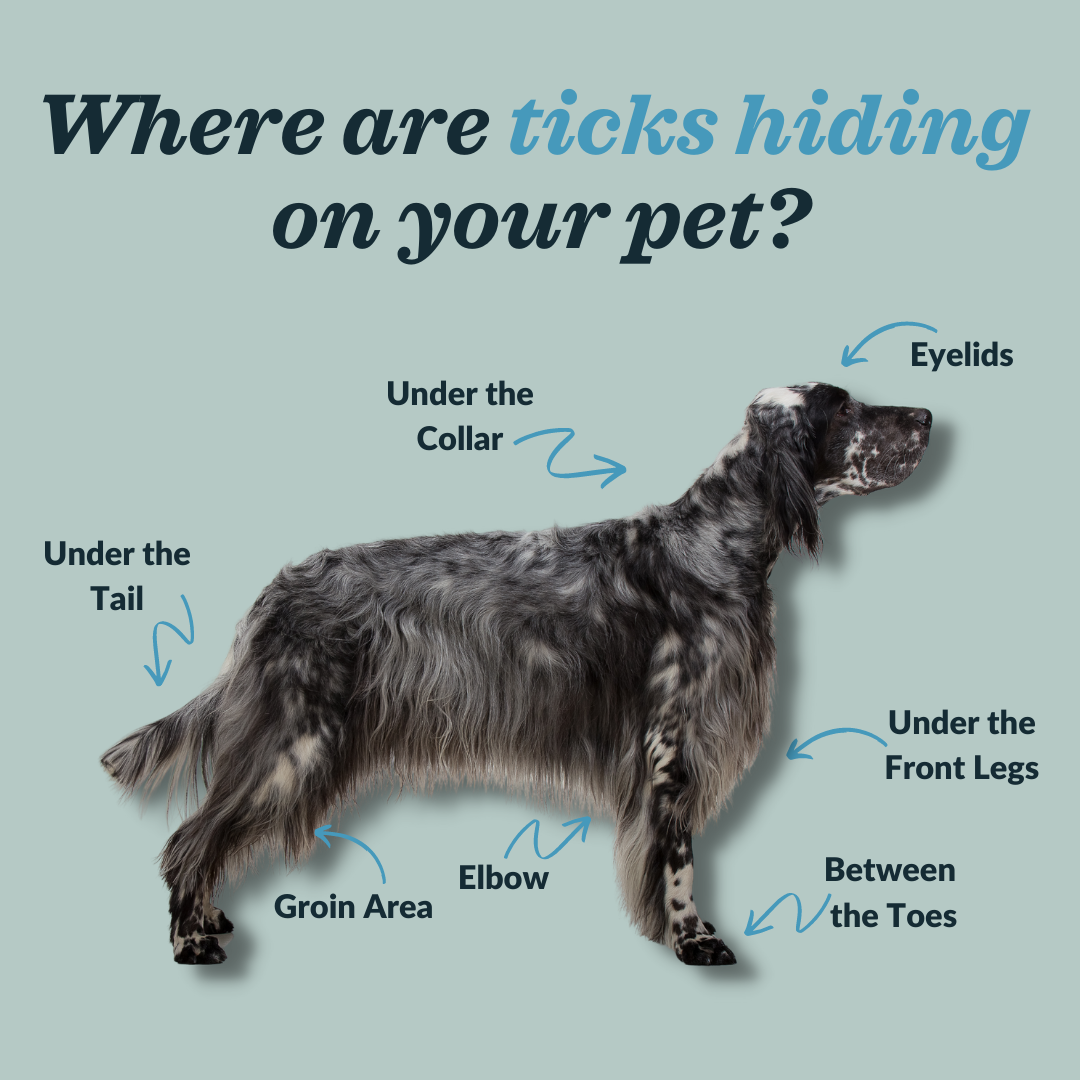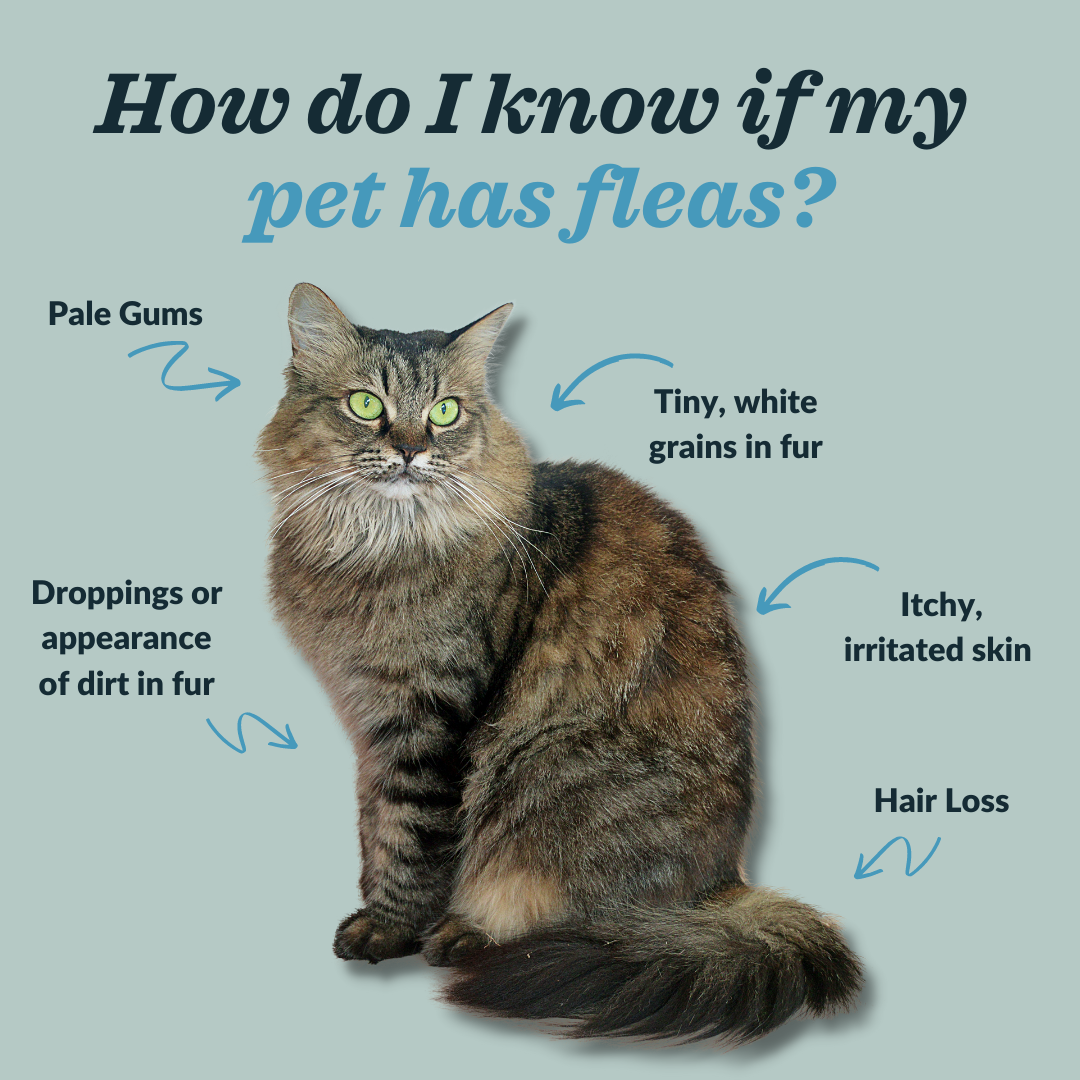Flea & Tick 101
Posted by Chow Hound Pet Supplies on Mar 1st 2023
Why are fleas and ticks dangerous to your pets?
Pet owners always hear about the importance of flea and tick prevention. However, you may not know what fleas and ticks are or why they can be dangerous to your pet. Fleas and ticks are both parasites that feed on their host. They can carry a variety of diseases that can affect your pet.

How do I know if my pet has ticks?
Unlike fleas, most ticks are visible to the naked eye. When you are petting your furry friend make sure to take note of any bumps you may feel. Check them out There are places that ticks tend to hide on your pet. These areas include under the collar, tail, and front legs. Ticks can also hideout on your pet’s elbows, groin area, eyelids, or even in between their toes. We recommend checking these areas regularly and especially after being outside for prolonged periods.
What do I do if my pet has a tick?
There are a few ways to safely remove a tick from your pet’s skin. You can use your handy household tweezers to remove ticks. Start by using clean tweezers and grab the base of the tick as close to the skin as possible. Next slowly and steadily pull the tick away from your pet’s skin. Make sure not to jerk or pull away too quickly. You can also a tick removal tool like the Alzoo Exitick Transparent Tick Remover. These tools can make it easier to remove ticks and are a bit more hands-off.
Once you have removed the tick fully from your pet there are a couple of additional steps you should take to keep your pet safe. The easiest and most effective way to kill a tick to by submerging the tick in a container with isopropyl alcohol and putting a lid on the container. You will also need to disinfect the tick bite area. Use gentle soap and water to clean the area. Keep an eye on the area to ensure no redness or inflammation.
If you are unable to safely remove a tick from your pet or don’t feel comfortable trying. You can always call your veterinarian to ask for assistance.

How do I know if my pet has fleas?
Unfortunately, fleas are much harder to spot on your pet than ticks. If your pet seems itchier than normal that may be an indicator that they have fleas. However, many other symptoms may be present if your pet has fleas. The symptom list below from the ASPCA is a great reference.
Symptoms of Fleas on Dogs
- Droppings or appearance of dirt/ sand in the fur
- Tiny, white grains in fur (flea eggs)
- Excessive itching, scratching, licking, or biting their skin
- Hot spots or scabs
- Hair loss
- Pale Gums
- Tapeworms
Symptoms of Fleas on Cats
- Droppings or appearance of dirt/ sand in the fur
- Tiny, white grains in fur (flea eggs)
- Itchy, irritated skin
- Excessive scratching
- Chewing and licking skin or fur
- Hair loss
- Pale lips or gums
- Tapeworms
What do I do if my pet has fleas?
There are several ways to combat fleas once they have invaded your et’s fur. One of the most popular methods is washing your pet with a flea and tick shampoo, we like this one from Sentry. You can also use a flea treatment spray to rid your pet of pesky fleas. Another useful tool when dealing with fleas is a flea comb. Flea combs can help detect and remove fleas from your pet’s coat. Chewable treatment options are also available that can start killing fleas in just one hour. We recommend the Advantus Oral Flea Treatment Soft Chews. If you are having a difficult time ridding your pet of fleas consult your veterinarian.
How can I prevent fleas and ticks?
The best way to deal with fleas and ticks is to prevent them! There are natural options from Earth Animal like spot treatments, collars, and herbal drops. The traditional route for flea prevention is a monthly treatment like Frontline Plus. These preventatives are available for both dogs and cats.






